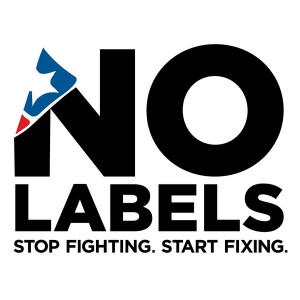By John Y. Brown III, on Fri Jan 25, 2013 at 12:00 PM ET Clean living. Baby steps.
I have several hundred songs downloaded on my iTouch.
All of them legally downloaded. And I’m feeling kind of smug about that.
And yet my inner rebel refuses to put on my seat belt until I am leaving my neighborhood—several hundred feet from my driveway.
I can’t explain why I feel the need to flout the law and live on the edge like that?
 Who can say? It’s who I am. Who can say? It’s who I am.
Like a Hell’s Angel of suburbia (but driving a Honda Accord instead of a Harley.)
But at least the version of Steppenwolf’s “Born to be Wild” I listen to before buckling up wasn’t illegally downloaded.
And today was followed on my iTouch by George Michael’s “You Gotta Have Faith.”
Baby Steps
By Julie Rath, on Fri Jan 25, 2013 at 8:30 AM ET Do you avoid opening your closet door because you’re afraid a tennis racquet is going to fall out on your head? Sporting goods aside, it’s always nice to have a workable closet. Much of my client work is helping people to streamline and edit their wardrobes; trust me, I’ve seen it all in there…everything from bike pumps and paint cans to women’s unmentionables. And that’s all I’ll say about that! So don’t worry; no one is beyond help when it comes to getting a closet in shape.
Here I am on a recent closet session checking out my client’s go-to navy suit.

When your wardrobe contains only items you actually wear, it allows you to get your day started faster so that you can focus on what you do best – instead of worrying about where the pants to your gray pinstripe suit are. The first step to creating a closet that works for you is to set aside a couple of hours for a closet clearing. Below are 7 questions to ask yourself when considering each item:
1. Is it in good condition?
2. Is it out of style or do you not like the style?
3. Is it relevant to your lifestyle?
4. Does the color look good on you? (to find out what colors look best on you, contact me).
5. Does it fit?
6. Have you worn it in the past year and a half?
7. Do you actually like it?
If the answer to 2 or more of these is “no,” then you can do better, and I’d recommend donating it. And if you’re too busy or don’t have the patience to do this yourself, call in a professional who can get the job done for you quickly and efficiently.
Here’s to starting 2013 with a functional closet that suits your needs.
By RP Staff, on Thu Jan 24, 2013 at 3:22 PM ET National Public Radio’s On Point with Tom Ashbook presents: Hard Times And Polarized Politics:
From Tom Ashbrook:
Why are American politics and American policy so stuck? So stuck that what should be a dynamic economy is now seen as maybe the biggest threat to the world economy… because of Washington.
Economist Benjamin Friedman says we’re in a trap. A bad economy is prompting bad policy from Washington, he says. Good times, good policy. Bad times, bad policy. And we’re in a world of bad right now.
We need to break the cycle. But how?
Guests
Benjamin Friedman, economist and professor of political economy at Harvard University. Author of “The Moral Consequences of Economic Growth.” You can read an excerpt here.
Jonathan Miller, co-founder of No Labels, a political non-profit made up of Democrats, Republicans and Independents, dedicated to problem solving. Former state treasurer of Kentucky. (@recoveringpol)
By John Y. Brown III, on Thu Jan 24, 2013 at 12:00 PM ET The McRib Code
The McRib sandwich is back at McDonalds . But there is far more to it than the simple reintroduction of failed fast food sandwich for about the 19th time in approximately 31 years.
I have combined the DaVinci Code formulas and validated them through Nostradamus’ projections that reference a similar irregular phenomenon.
And it is not pretty.
 How bad? How bad?
Almost enough to make you want to go Mayan.
After you’ve eaten a 2 for 1 McRib. Just know there more at stake. ; )
By Zack Adams, RP Staff, on Thu Jan 24, 2013 at 10:30 AM ET  The Politics of Tech Cable Industry Finally Admits That Data Caps Have Nothing To Do With Congestion: ‘The reality is that data caps are all about increasing revenue for broadband providers — in a market that is already quite profitable.’ [TechDirt]
The Federal Communications Commission’s chairman is setting a goal for all states to have a gigabit broadband connection by 2015 – similar to the Google Fiber network that is currently in Kansas City. [CNET]
Do the major cable companies need to be broken up like the steel and railroad industries in the 19th century? This article argues that they are essentially monopolies that are stifling innovation. [BGR]
Google is currently looking at some interesting methods of freeing us from the passwords we are bound to when online. [Wired]
It is being argued that Microsoft Corp Chief Executive Steve Ballmer is not the right leader for the world’s largest software company but holds his grip on it by systematically forcing out any rising manager who challenges his authority. [Reuters]
Google is moving in to London – they recently purchased a $1 billion plot of land in the King’s Cross Central development. [Verve]
Are you regularly running out of materials to use in your 3D printer? Well this machine will solve that problem! [Wired]
By Jonathan Miller, on Thu Jan 24, 2013 at 9:15 AM ET If you are near a radio or computer at 11:00 AM EST today, you can catch me as the special guest on National Public Radio’s “On Point” with host Tom Ashbrook.
The live online stream can be accessed by clicking here.
Alternatively, you can click here to find the show on your satellite or FM radio dial.
I will be discussing the extraordinary January we’ve been having at No Labels. In the wake of a spectacular Meeting to Make America Work last week in New York, the U.S. House of Representatives just today passed our signature legislation, “No Budget, No Pay,” and we expect imminent Senate passage. Read all about the progress of “No Budget, No Pay” by clicking here.
To join the conversation on the air, call the NPR studio at 1-800-423-8255. Just no questions about UK basketball. It’s been a bit depressing lately.
By Josh Bowen, on Thu Jan 24, 2013 at 8:30 AM ET I believe most of us are educated enough to realize that most of the foods at the grocery store are contaminated in some way. Whether it be hormones and nitrates added to our meats, pesticides and insecticides sprayed on our vegetables or genetically modified crap thats all over the grocery store. It almost seems like the only way to eat decent food is to grow it and hunt it yourself. On top of all of that, we now have another problem child, gluten, that wrecks our digestive systems and puts our bodies in a state where we cannot lose weight or bodyfat. In fact gluten (which seems to be in everything) will not allow our bodies to absorb fat soluable vitamins (A,D,E,K) which leads to malnutrition. Malnutrition, you thought, only occured in third world countries right? Nope, it happens here in the US because of the food industry and the crap they put in our foods.
On to the important stuff, I wrote this blog as educational and from a disertation point of view. It is somewhat “technical” but I find this topic interesting. This is a comprehensive list of gluten free foods, foods with gluten AND ingredients to look out for when considering gluten-free options (there are alot of options now). So here you go…
What is Celiac Disease? Also referred to as gluten sensitive enteropathy (GSE), or celiacsprue, is a chronic, inherited digestive disease that can lead to malnutrition if untreated.CD is the result of an immune system response to the ingestion of gluten (a protein found in wheat, rye, and barley) that damages the small intestine. When the small intestine is damaged, nutrients pass through the small intestine, rather than get absorbed. To develop celiac disease (CD), you must inherit a gene, be consuming gluten, and have the disease activated. Common triggers include stress, trauma (surgeries, etc.) and possibly viral infections. Approximately 10% of first-degree relatives could have CD triggered in their lifetime. The disease is permanent and damage to the small intestine will occur every time you consume gluten, regardless if symptoms are present.
Celiac disease is a genetic disorder affecting 1:133 persons in the United States,potentially 2 million people. For every person diagnosed with CD, approximately 80 people are undiagnosed.
What is Gluten?
 Gluten is a composite formed from several different proteins. It is found most commonly in wheat and other related grains, such as barley and rye. Adding texture and a characteristic chewiness to baked goods, gluten is used in a wide variety of other foods as a thickener and binder, flavor enhancer, and protein supplement. Some people can develop intolerance to these proteins, however; a gluten-free diet often helps to alleviate symptoms caused by this intolerance and prevents further damage to the body. Gluten is a composite formed from several different proteins. It is found most commonly in wheat and other related grains, such as barley and rye. Adding texture and a characteristic chewiness to baked goods, gluten is used in a wide variety of other foods as a thickener and binder, flavor enhancer, and protein supplement. Some people can develop intolerance to these proteins, however; a gluten-free diet often helps to alleviate symptoms caused by this intolerance and prevents further damage to the body.
Diseases Associated with Gluten Intolerance-
Systemic Lupus Erythematosus
Lupus can affect many organs: the skin, joints and muscles, kidneys, heart, brain, lungs, blood and blood vessels, intestines, hearing and balance. Ninety percent of patients are female. Symptoms vary depending on the organs involved, but may include fatigue, fever, anemia, rashes in sunexposed areas, aching muscles, painful and stiff joints,confusion, seizures, inflammation around the heart or lungs, sores in the mouth, vasculitis, blood clots, and changes in the urine.
Thyroid Disease
There are two common forms of autoimmune thyroid disease commonly associated with CD and DH – Grave’s disease and Hashimoto’s disease.
Grave’s Disease: An overaactive thyroid. Symptoms may include weight loss, rapid pulse, protruding eyes, feeling too warm, restlessness, insomnia, diarrhea, irritability, palpatations.
Hashimoto’s Disease: An underactive thyroid. Symptoms may include weight gain, slow pulse, red puffy eyes, feeling too cold, mental slowness, drowsiness, confusion, constipation, enlarged thyroid gland in the neck, thick and coarse hair.
Addison’s Disease
A rare disease involving the adrenal gland. The prevalence of CD in persons with Addison’s Disease is significant. Symptoms of Addison’s may include weight loss, increasing fatigue, lack of appetite, anemia, darkening of the skin, increased sun sensitivity, low blood sugar, low blood pressure, nausea, vomiting, diarrhea or constipation, and dehydration.
Autoimmune Chronic Active Hepatitis
A disease of the liver that may be mistaken for alcoholic liver disease. Seventy percent of patients are female. Symptoms can include fatigue, abdominal discomfort, itching, nausea, vomiting, bloating, yellowing of the skin and whites of the eyes (jaundice), enlarged liver, tumors on the skin, aching, fever, mental confusion, and cirrhosis.
Insulin Dependent Diabetes Mellitus (Type 1)
A disease of the pancreas. The incidence of Type 1 diabetes and CD is between 6-12%. Often the second disease is silent (having few symptoms). Symptoms can include excessive thirst, hunger, weakness, frequent urination, blurred vision, trembling, confusion, weight loss, and coma (if left untreated).
Where is Gluten commonly found?
Read the rest of…
Josh Bowen: The Limited Factor — The Gluten Story
By Jonathan Miller, on Wed Jan 23, 2013 at 3:00 PM ET
 Today, the U.S. House of Representatives passed No Budget, No Pay as a key part of the House debt ceiling extension bill. No Budget, No Pay was conceived by No Labels over a year ago as part of the Make Congress Work! action plan to break the gridlock in Washington. Today, the U.S. House of Representatives passed No Budget, No Pay as a key part of the House debt ceiling extension bill. No Budget, No Pay was conceived by No Labels over a year ago as part of the Make Congress Work! action plan to break the gridlock in Washington.
“The No Labels grassroots army has been pushing No Budget, No Pay for over a year, and we’re ecstatic that the House has embraced the idea in a strong a bipartisan vote,” said No Labels Co-Founder David Walker. “Although withholding congressional pay may seem like a drastic step, it’s necessary to provide the right incentives and accountability mechanisms to encourage Congress to do its job in connection with the nation’s budget. Based on comments from key Senate leaders that they intend to pass the budget this year, it looks like No Budget, No Pay has already had a positive behavioral effect.”
Speaker of the House John Boehner and Majority Leader Eric Cantor endorsed No Budget, No Pay last week, but No Labels worked with Senator Dean Heller (R-NV) and Congressman Jim Cooper (D-TN) to first introduce No Budget, No Pay legislation in the House and Senate in December of 2011. With support from No Labels’ hundreds of thousands of grassroots supporters, the bill eventually garnered over 90 co-sponsors in the 112th Congress and received a hearing in the Senate in March of 2012. Specific details of today’s House passed version of No Budget, No Pay differ from No Labels’ original proposal, but the underlying idea is the same: members of Congress shouldn’t be paid if they can’t pass a budget on time.
“I’m proud to have been the original co-sponsor of the No Budget, No Pay proposal in the House, and I am pleased that members from both sides of the aisle have supported this straightforward idea,” said Congressman Jim Cooper (D-TN). “We owe it to the American people to pass the budget each year, and this vote affirms that Congress should face consequences when we fail to do so.”
“Without a budget, Congress is essentially spending taxpayer money first and asking questions later, but No Budget, No Pay creates a serious incentive for Congress to handle our nation’s finances more responsibly,” said Congressman Reid Ribble (R-WI). “It is not a partisan issue – it’s common sense.”
===
Here’s the story from my fellow No Labels co-founder, John Avlon of CNN:
If you don’t get the job done at work, you won’t get paid.
But Congress plays by its own rules. Specifically, Congress hasn’t passed a budget in almost four years. This is basic — and required by law. Congress seems to think it’s bigger than the law, however, which might help explain one recent poll that found it less popular than root canals, cockroaches and Donald Trump.
Read the rest of…
No Budget No Pay Sails Through the House; and Passage thru the Senate Appears Imminent
By John Y. Brown III, on Wed Jan 23, 2013 at 12:00 PM ET Remember, the the “art of negotiation” is really the “art of problem solving.”
To get what you want in negotiating, however, you have to first be able to give the other side what they want, too.
Negotiation isn’t about who can yell loudest what they want until the other side capitulates. It’s a process of understanding until the wisest —and often most creative—resolution of the problem is discovered and properly disclosed and proffered. And you can’t do that unless you know fully what the other side “really” wants–both what they say they want and what they actually want (the two aren’t always the same….not because the other side is concealing something but because they may not have fully thought through the process themselves and can answer clearly and candidly.)
A great example I’ll never forget from my MBA program went something like this. Two companies in different industries were negotiating for a rare orange available in scarce supply from South America. They went to war in negotiations for the orange, escalating the price and trying to undermine the others need and use for the orange. Each needed more than “half” the supply and were willing to pay premium pricing for it. The two sides exhausted the different ways of dividing up ownership of the oranges between the two but none were satisfactory. And then, at the end of this disastrous and destructive and costly negotiation, it is discovered that Company A needs only the rind of the orange and Company B the pulp. But neither side took the time to find that out about the other before it was too late and both companies paid exorbitant prices and didn’t get what they wanted.
Why?
 Ignorance of the situation. Ignorance of the situation.
Or more pointedly, self-absorption and an unwilling to try to “solve a problem” rather than merely “getting mine.”
This is a great life lesson and business lesson to understand what each side is really needing and seeking. Knowledge is power. And smart. And ignorance is so very costly and wasteful. And ultimately humiliating and does a disservice to all involved. It’s never enough to know only what you want. The key, ironically, to the most successful negotiators (problem solvers) is that they also know what the other side wants –and how to deliver it to them.
If you enter a negotiation without a strong sense of that understanding, you aren’t really negotiating or problem solving. You are just making petulant, uninformed demands.
By Mona Tailor, on Wed Jan 23, 2013 at 8:30 AM ET
“Now is the time to make real the promises of democracy. Now is the time to rise from the dark and desolate valley of segregation to the sunlit path of racial justice. Now is the time to lift our nation from the quick sands of racial injustice to the solid rock of brotherhood. Now is the time to make justice a reality for all of God’s children.
I have a dream that one day this nation will rise up and live out the true meaning of its creed: “We hold these truths to be self-evident: that all men are created equal.””
-Martin Luther King, Jr. “I Have a Dream”. August 28, 1963
 I remember every Martin Luther King, Jr holiday, our teachers in elementary school would have us watch Dr. King’s famous speech from 1963. His voice echoing for equality was beyond an young child’s understanding, but his emotion was transcendent. I remember every Martin Luther King, Jr holiday, our teachers in elementary school would have us watch Dr. King’s famous speech from 1963. His voice echoing for equality was beyond an young child’s understanding, but his emotion was transcendent.
As I have grown up, the memory of watching Dr. King echoes through my mind every Martin Luther King, Jr. Holiday. For this holiday, the words of “I Have a Dream” became even more poignant for me. This year, the holiday to honor Dr. King coincided with the Presidential Inauguration of an African-American President and I was fortunate enough to bear witness.
The crowd in Washington, DC in 2013 must have mirrored the crowd on the National Mall in 1963. The crowd represented individuals of all ages, all races, all religions, all creeds from all states regardless of distance. It did not matter who they were, or if they knew each other before the event, the viewing of the inauguration was like a reunion between old friends. We joked about the trees blocking our view, we cheered with our first peek of Michelle Obama, and we shared stories about what this moment meant to us.
The most moving part of the crowd for me was seeing the older African Americans. They had braved the cold, braved the crowd, and braved their health to be witness to history. As I watched the excitement on their faces, I wondered how many of them were able to witness Dr. King’s speech fifty years ago, not as a videotape as I remembered, but as a live event. The emotion of this moment for them was given away by their voices when they cheered, “Amen” during Myrlie-Evers Williams’s invocation. In fifty years, they had come so far from the injustices of segregation to having an African-American President sworn into a second term.
The t-shirt vendors off the National Mall and streets of DC got it right. Their shirts had a picture of Dr. King and President Obama, with the caption, “Dream Fulfilled”. What a profound inaugural day. Martin Luther King, Jr. had a dream indeed.
|
The Recovering Politician Bookstore
|
 Who can say? It’s who I am.
Who can say? It’s who I am.






 Gluten is a composite formed from several different proteins. It is found most commonly in
Gluten is a composite formed from several different proteins. It is found most commonly in  Today, the U.S. House of Representatives passed No Budget, No Pay as a key part of the House debt ceiling extension bill. No Budget, No Pay was conceived by No Labels over a year ago as part of the Make Congress Work! action plan to break the gridlock in Washington.
Today, the U.S. House of Representatives passed No Budget, No Pay as a key part of the House debt ceiling extension bill. No Budget, No Pay was conceived by No Labels over a year ago as part of the Make Congress Work! action plan to break the gridlock in Washington. I remember every Martin Luther King, Jr holiday, our teachers in elementary school would have us watch Dr. King’s famous speech from 1963. His voice echoing for equality was beyond an young child’s understanding, but his emotion was transcendent.
I remember every Martin Luther King, Jr holiday, our teachers in elementary school would have us watch Dr. King’s famous speech from 1963. His voice echoing for equality was beyond an young child’s understanding, but his emotion was transcendent.


